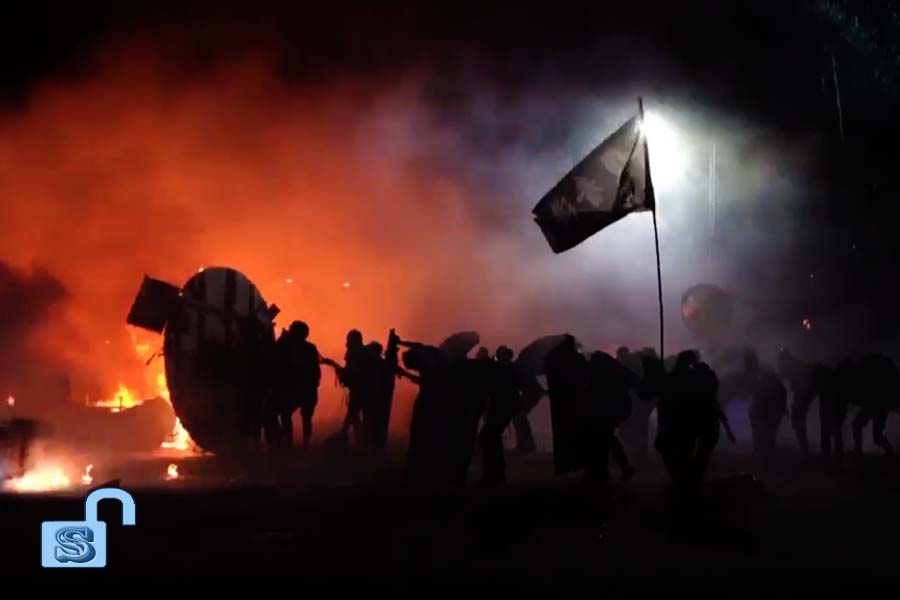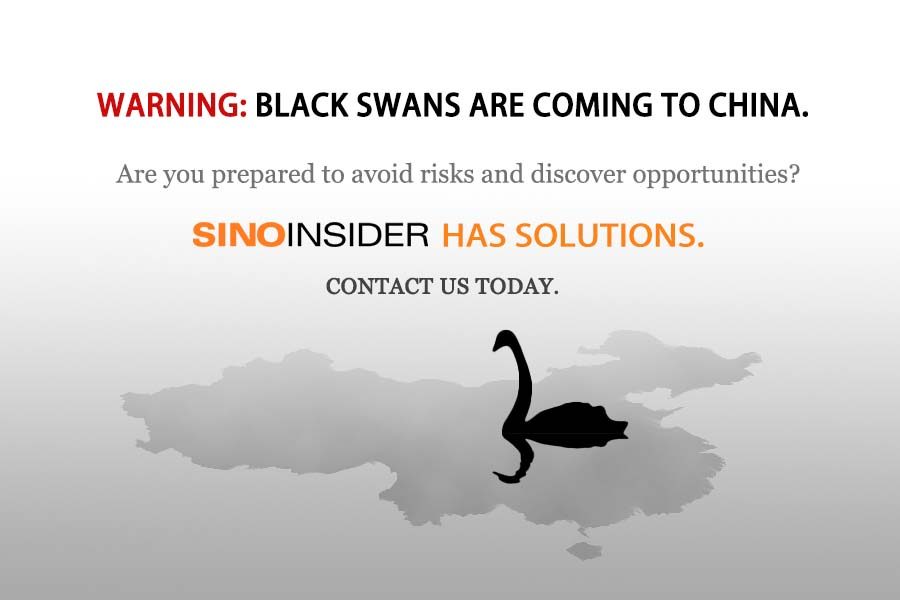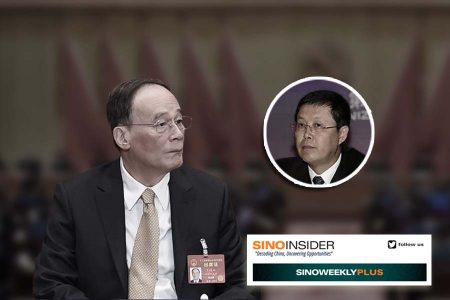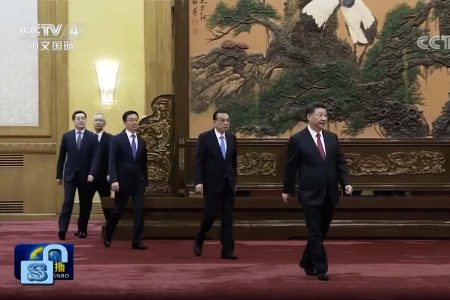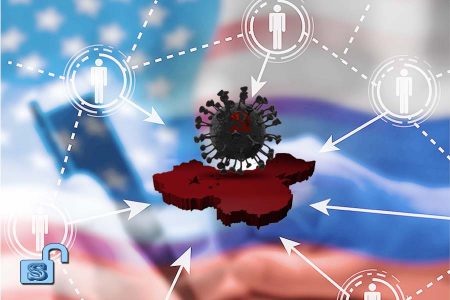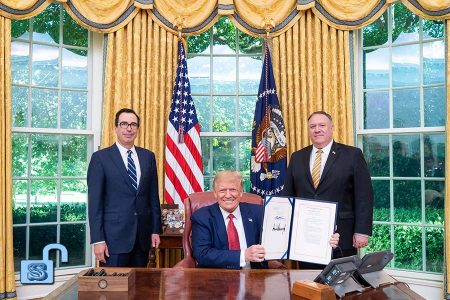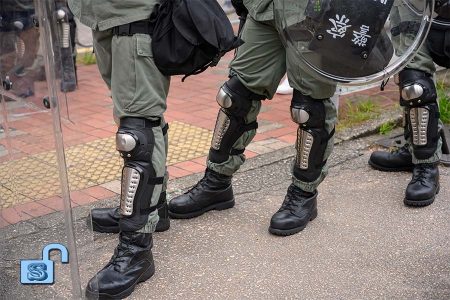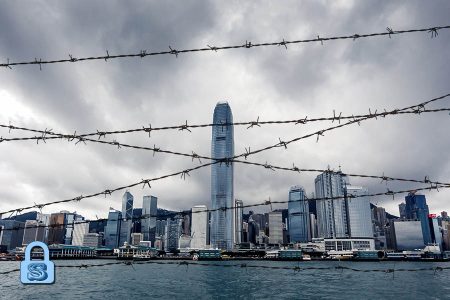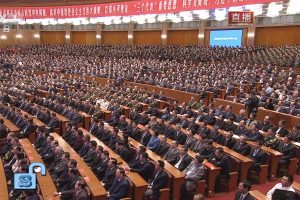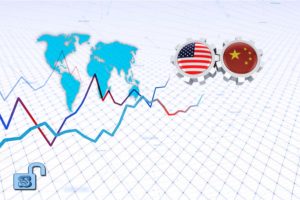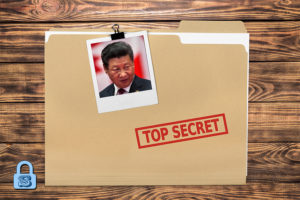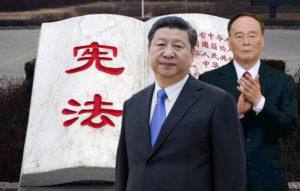◎ The CCP, the Hong Kong government, and the Hong Kong police are “pouring oil on fire” by ramping up violent tactics and disinformation operations to suppress the Hong Kong anti-extradition bill protests.
The situation in Hong Kong took another turn for the worse on Nov. 11 with police shooting two protesters at close-range and a man being set on fire. On the same day, the police engaged in pitched battles with students and protesters at the campuses of several universities across Hong Kong. Police-protester campus confrontations have not abated as of Nov. 13, and journalists describe scenes at the Chinese University of Hong Kong campus as a “war zone.”
In considering the characteristics of the Chinese Communist Party and the interests of the Hong Kong government and the Hong Kong police force, we believe that the Hong Kong situation will likely deteriorate further in the coming days until a watershed moment arrives.
The backdrop:
On Nov. 11, citizens and protesters in Hong Kong organized boycotts (work, school, businesses) to commemorate the suspicious death of college student Alex Chow Tsz-lok and protest police abuses of authority. The boycotts and street blockades, which started at about 7 o’clock in the morning (Hong Kong time), led to traffic congestion and chaos in several parts of the city, including parts of Central, Sha Tin, and Mong Kok. In Mong Kok, black-clad people believed to be protesters set fire to several businesses with pro-CCP leanings, including Tai Hing Restaurant, Tsui Wah Restaurant, and the Bank of China (Hong Kong).
The Hong Kong police fired many rounds of tear gas in Hong Kong’s central business district area and used water cannons in Mong Kok. The police also entered several universities in Hong Kong without a search warrant to make arrests and fire tear gas. Students at the Chinese University of Hong Kong in Sha Tin and other schools set up makeshift barricades to block police access. Several plainclothes and traffic police were also spotted pointing their service revolvers at passersby at the Tung Chung and Sha Tin MTR stations.
Other major flashpoints include:
1. In Sai Wan Ho district at about 7:15 a.m. Hong Kong time, a traffic police fired three shots from his service revolver, hitting two people. Media reports say that one of the persons who was shot at close-range, a 21-year-old protester, is in critical condition. Video footage of the incident showed that the traffic police had pulled his service revolver before grabbing an unarmed youth in a white shirt. As the 21-year-old protester and another protester walked up to the police, possibly in an attempt to rescue the youth in white, the policeman fired on them without giving any prior warning. Video footage of the incident showed clearly that the two protesters who approached the police were unarmed and did not make any threatening gestures toward the police officer before he opened fire.
2. In a video widely circulated online, a motorcycle police officer was seen deliberately driving into a group of protesters at least three times in the district of Kwai Fong. At a press conference, a police spokesperson said that the motorcycle officer has since been suspended.
3. At about 1:00 p.m. Hong Kong time, a man in a green T-shirt was set on fire on a pedestrian bridge in the Ma On Shan district. The man quickly removed his shirt and the fire appeared to be extinguished quickly. A police spokesperson, however, claimed that the man was “admitted to the hospital in critical condition.”
According to video footage of the incident, the man in the green T-shirt, who was expressing pro-China comments, was arguing with pro-democracy protesters on the pedestrian bridge when a black-clad man suddenly went up to him, doused him in liquid, and set him on fire before dashing away. The black-clad man was not part of the protester crowd who was arguing with the man in the green T-shirt. Other video footage showed that the green-shifted man had earlier tried to restraint several black-clad protesters who were vandalizing a subway fare gate; however, the man fell to the ground and the protesters escaped. It is currently impossible to prove from available video footage that the black-clad man who set the green-shirted man on fire is part of the group of protesters whom the latter previously encountered.
Global Times, a CCP nationalistic propaganda outlet, gave an over-the-top account of the incident using incendiary language: “Also on Monday, a video showed rioters pouring flammable liquid on a middle-aged Hongkonger, and set him on fire when he was publicly expressing his opposition to them, saying ‘we are all Chinese.’ The man soon turned into a fireball. He was severely burned and reportedly in critical condition.”
4. At about 6:00 p.m. Hong Kong time, Hong Kong leader Carrie Lam held a press conference where she criticized the protesters in a harsh and serious tone. Lam condemned the “destructive” behavior of the protesters, described them as “enemy of the people,” and declared that they “will never win.”
“If there’s still any wishful thinking that by escalating violence the Hong Kong SAR government will yield to pressure to satisfy the so-called political demands, I’m making this statement clear and loud here: that will not happen,” she said.
5. Hong Kong riot police and protesters began clashing in public areas near college campuses. The clashes grew into a days-long standoff on some campuses, particularly at the Chinese University of Hong Kong where riot police fired tear gas, rubber bullets, and other projectiles into the campus, and later charged inside to make arrests and beat up students. CUHK students found at least 2,356 empty tear canisters in their campus and innumerable empty rubber bullet casings.
A video widely circulated online showed several policemen dragging the limp body of a student on the ground and to the rear of the police assembly area. Social media reports say that a protester was hit in the chest by a tear gas canister and suffered a cardiac arrest. CUHK’s gym was turned into a temporary “field hospital” where the wounded could be treated; a doctor who drove three hours to get to CUHK to volunteer his medical services wrote in a Facebook post that he had “never seen such a frightful scene … headshot wounds still bleeding, whole-body burns, gunshot wounds, fractures … everyone is injured, and all of them are kids.”
Former CUHK alumni, including businesspeople, pro-establishment lawmakers, and other professionals took to social media to condemn the police action. Some expressed concern that another Tiananmen Square incident could break out at the university. Others called for alumni to return to campus and protect it from police violence. Joseph Sung Jao-yiu the former CUHK president, brought a team of top doctors with him to the CUHK campus on Nov. 12 to help treat the wounded. Speaking to a first-aider at the “field hospital,” Sung said “all the best medical specialists are here, but I don’t know what to do when I go in [to the “field hospital”].”
Our take:
1. The police action on Nov. 11 and Carrie Lam’s press conference on the same day adhere to the “judo move” and “terrorism movement” strategies which we identified in previous articles. If anything, it seems like the CCP, the Hong Kong government, and the Hong Kong police are “pouring oil on fire” by ramping up violent tactics and disinformation operations to suppress the Hong Kong anti-extradition bill protests.
The current stance of the Hong Kong government and police suggest that the CCP could be pursuing the “lower strategy” which we identified earlier to resolve the Hong Kong situation. We wrote: “In a scenario where the CCP ‘meets’ the five demands but gauges that the move cannot grant the pro-establishment side a strong advantage at the polls, it could shift strategies and instead escalate chaos in the city to give the Hong Kong government an excuse to postpone the local elections. The CCP, however, will avoid this ‘lower strategy’ where possible because it further discredits the ‘one country, two systems’ model, weakens its ability to sway the 2020 Taiwan election, and greatly tarnishes the PRC’s international image.”
We believe that CCP characteristics and the factional struggle in the Party’s elite are the main reasons behind the CCP opting for the “lower strategy” to deal with Hong Kong. Due to its complexity, we will explore the factional struggle aspect in a forthcoming article; the following two points will examine how CCP characteristics is influencing its Hong Kong strategy, and why escalating tensions in the city suit the interests of the Hong Kong government and police force.
2. In an earlier piece where we explored CCP ideology and culture, we noted that while the CCP “claims that it is ‘great, glorious, correct’ (偉光正), some Chinese commentators have summarized Party culture as ‘deceit, perniciousness, struggle’ (假惡鬥).” Party culture in turn shapes policy, strategy, and tactics. Thus, classic CCP suppression tactics being used on the mainland for “stability maintenance” work include inciting and infiltrating the masses, carrying out cover-ups, blurring the facts of the matter, spreading propaganda and disinformation, shifting the focus of an incident, and committing new and more heinous acts to obscure the original heinous act which sparked unrest.
The “judo move” and “terrorism movement” strategies used in Hong Kong conform to classic CCP suppression tactics. From our observation, we believe that the “man set on fire” incident on Nov. 11 is suspicious and has the ultimate effect of benefiting CCP propaganda work on Hong Kong “to discredit and take down the entire anti-extradition bill movement.”
However, while classic CCP “stability maintenance” work is effective on the mainland, it becomes a “lower strategy” in Hong Kong, a genuine “rule-of-law” society with a relatively free informational environment and a local culture which differs greatly from Party culture in mainland China.
Hong Kong’s culture and informational environment are why we believe that the CCP’s reliance on its usual “stability maintenance” suppression tactics will ultimately backfire and lead to a watershed moment. The watershed moment will likely improve the current situation in Hong Kong and endanger the CCP regime.
3. We previously analyzed that the CCP could sacrifice Carrie Lam, senior members of the Hong Kong government, and the Hong Kong police force as part of a solution to resolve its Hong Kong crisis (see here and here). To avoid being sacrificed, it is in the interest of the Carrie Lam’s government and the Hong Kong police to see to it that Hong Kong is as chaotic as possible. And to keep Hong Kong chaotic or even worsen the situation, it makes sense for the Carrie Lam government and the Hong Kong police to persist with the “judo move” and “terrorism movement” strategies, even if Party central has other ideas.
The Carrie Lam government and Hong Kong police’s adherence to CCP “stability maintenance” tactics, however, greatly increases their personal and political risk levels when a watershed moment arrives in Hong Kong. Local polls show that Lam is the most unpopular Hong Kong leader in history and the Hong Kong police no longer has the trust of many people in Hong Kong. In fact, many protesters and people in Hong Kong increasingly believe that the police are out to harm, rape, and even kill them in light of several suspicious incidents:
- In September, Christy Chan Yin-lam, a 15-year-old girl, died under mysterious circumstances. The police hurriedly cremated her body and released an edited surveillance tape. Hong Kong netizens suspect that the police raped Chan and killed her to cover-up their tracks. In early November, Chan’s mother, who backed the police’s claim that she had committed suicide, was found to have also committed suicide; many in Hong Kong are speculating that the police were “covering up their tracks” with the death of Chan’s mother. A Hong Kong police officer being interviewed by South Korean national broadcaster KBS that the death of Chan was initially classified as a murder case, but investigators were later forbidden from treating the case as murder.
- On Oct. 1, a Hong Kong police shot and critically wounded an 18-year-old high school student.
- On Nov. 4, 22-year-old college student Alex Chow succumbed to his injuries, which were officially the result of his falling down from the second floor of a multi-storey car park. Hong Kong netizens suspect that the police had in fact beaten Chow into unconsciousness and threw him down from the multi-storey car park; reports on social media claim that the police had arrested the owners of cars whose cameras captured footage of the police beating Chow and confiscated their car camera.
- On Nov. 10, the police entered a shopping mall without a search warrant to chase down protesters. Later, the shopping was put on lockdown for several hours. Hong Kong netizens suspect that the lengthy lockdown was due to the fact that the police had beaten someone to death and needed time to “clean up.”
- On Nov. 11, a traffic police fired three shots from his service revolver without warning and wounded two protesters, including one 21-year-old man.
- On Nov. 11, a Hong Kong lawyer firm published a statement regarding a “Criminal Investigation into Allegation of Rape inside Tsuen Wan Police Station.” The statement noted that Ms X, a young Hong Kong female, was raped by a number of police officers in Tsuen Wan Police Station, and later “underwent a forensic medical examination” at the police’s request. “Ms X further underwent a termination of the ensuing pregnancy and has permitted the taking of a DNA sample from the aborted fetus to assist in identifying at least one of her assailants,” the statement read.
- On Nov. 12, riot police and protesters were engaged in a standoff at the City University of Hong Kong. Local media filming the standoff caught a riot police leader instructing his subordinate to “aim for the head” when firing rubber bullets at protesters on a pedestrian bridge.
The deep distrust in the Hong Kong police is best observed in a now common scene during police arrests—bystanders immediately ask for the name, identification number, and family contacts of the arrested persons, while those arrested declare that if they are later found dead, “I did not commit suicide.”
4. The CCP’s “pouring oil on fire” tactic presently appears to be meeting its external strategic objective.
Mainstream media outlets are covering the shooting of the 21-year-old protester and the “man set on fire” incident as though they were equally momentous despite the circumstances and follow-up to the latter incident being very suspicious and the former incident coming close to being a “near-Tiananmen Tank Man” event.
Meanwhile, United States President Donald Trump, his senior officials, and the Republican and Democratic leaders of the House and Senate did not criticize or comment on the Nov. 11 shooting incident on that day itself. On Nov. 11, the U.S. Department of State said in a statement that the U.S. is watching the “situation in Hong Kong with grave concern,” condemned violence on “all sides,” called on the police and protesters to “exercise restraint,” repeated Trump’s call for a “humane resolution to the protests,” and urged protesters and the Hong Kong government to enter into a dialogue. The State Department’s faulting of “all sides” in Hong Kong benefits the CCP’s propaganda work and fails to address the elephant in the room—it is the Hong Kong government’s hardline stance, escalation of violence, and refusal to listen to the protesters that caused the situation in Hong Kong to worsen to the current extent, and not the other way around.
Additionally, the fact that U.S. markets were hardly affected by the worsening situation in Hong Kong suggests that Wall Street is confident that the Hong Kong government and the CCP are in control of the situation.
We believe that Wall Street and the U.S. government are overestimating the CCP’s ability to handle Hong Kong and underestimating the Hong Kong people’s will to act and resist. The harder the CCP and the Hong Kong government clampdown, the more at risk they become of provoking a massive backlash from the Hong Kong people and bringing about a watershed moment. And when the watershed moment comes, the CCP is a high risk of being burnt by the fire which it helped fuel and grow by “pouring oil.”
Get smart:
The situation in Hong Kong is shaping up to be the CCP’s “Berlin Wall collapse” moment. Businesses, investors, and governments must prepare for Black Swan events in Hong Kong and tremendous change in China to avoid risk and seize opportunities.
